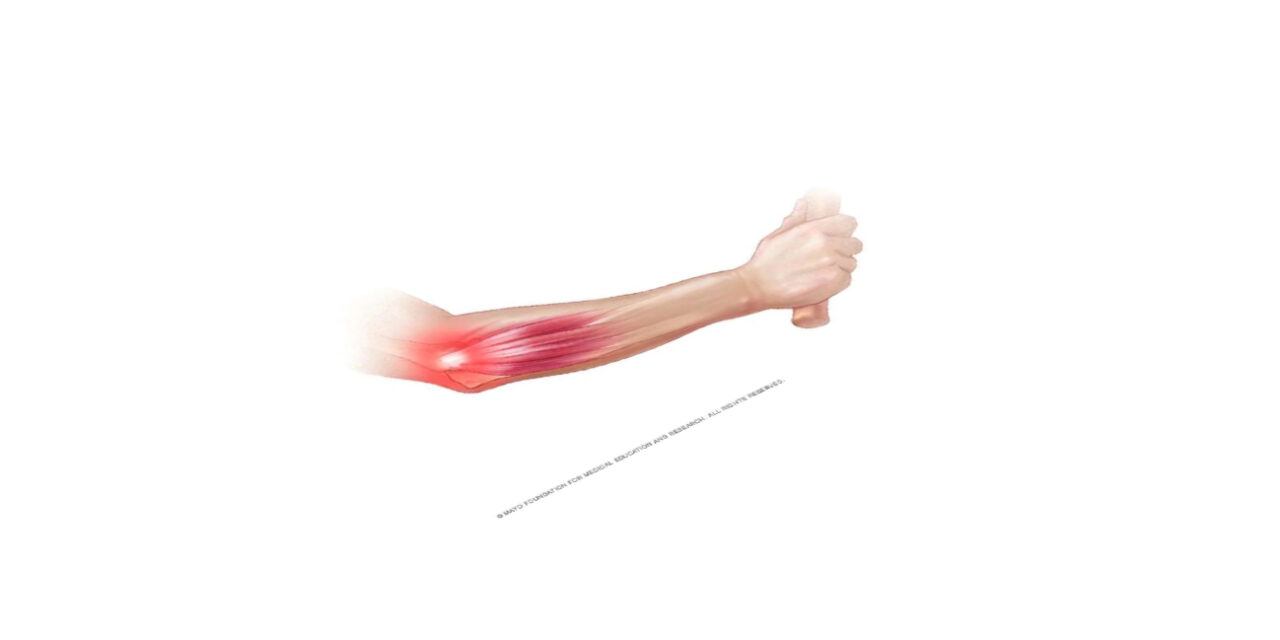Although the name “Tennis Elbow” sounds like it requires a racket, it’s actually very common and caused by normal movements and tasks—not a mean backhand.
What is Tennis Elbow? Tennis elbow, or lateral epicondylosis, is inflammation and small traumas of the tendons on the outer part of the elbow. [1] Pain usually is described as a “deep ache” or “burning” and may go throughout the elbow or into the arm.
How did I get Tennis Elbow? Common tasks that can cause this are typing, driving for prolonged periods with a tight grip on the wheel, heavy yard work, moving boxes, or repetitive turning like with a screwdriver. When you use this area repetitively, strain can occur, resulting in pain, inflammation, and decreased strength.
Can working out cause Tennis Elbow? In my experience as a certified hand therapist, I do see some people who lift heavy weights or perform heavy exercises with this problem, despite being very strong. This can be due to a few reasons:
- Poor body mechanics. Particularly when bench pressing or performing snatches/ cleans/ jerks. These exercises, if not done properly, can cause the wrist, hand, and elbow to be placed in a position that may cause strain (i.e., if “snatches” catch the wrist not supported or doing too heavy of a weight).
2. Reps/Sets. Heavy-weighted exercises do not always require high repetition. Small traumas over time can lead to a larger build-up of traumas in the elbow. Check in with your elbow/forearm after a workout. If you feel normal, tolerable soreness then you are probably alright; however, if you feel a lingering deep ache in your elbow that persists 1–2 hours following exercise, you may need to rest the arm/forearm for a day or two then re-evaluate. Rotate through various muscle groups and exercises each time you go.
What should I do if I have pain in my elbow?
The best thing to do if you feel pain in your elbow is to rest. Resting tissues that are inflamed and overworked will decrease the risk of causing further trauma or stress in that area. When lifting, be sure to keep your elbows by your side and palms up to avoid more pain. If pain persists beyond a week following a period of rest, ice, and over-the-counter interventions, consider getting it looked at by a professional.
What can I do to ease pain in my elbow? Icing for 10–15 minutes can help bring down some inflammation and pain. With any treatment, it is important to follow manufacturer’s guidelines and to not put it directly onto your skin, so use a pillowcase or kitchen towel to provide a layer.
Stretches to ease elbow pain:
1. With your elbow by your side, make a fist and move your wrist towards your body
2. Straighten your elbow with your fist pointing down
3. With your other hand, gently stretch your wrist downward
4. Using your other hand, gently rotate towards your pinky
Try to hold each position for 10–15 seconds, but do not cause yourself to have pain. They are meant to stretch, not hurt. Try to complete 3–5 exercise rotations 2–3x/day, followed by ice and rest. If any of the stretches cause pain, stop immediately.
References:
- Saunders, R., Astifidis, R., Burke, S., Higgins, J., & McClinton, M. (Eds.). (2016). Hand and UpperExtremityRehabilitation:APractical Guide. Elsevier.
- Mayo Foundation for Medical Education and Research. (2021, February 25). Tennis elbow. MayoClinic.https://www.mayoclinic.org/diseases-conditions/tennis-elbow/symptoms-causes/syc-20351987.
Evelyn Daniel, OTR/L, CHT is a certified hand therapist at OrthoSouth’s Primacy Parkway clinic, where she works closely with orthopedic hand surgeon Tyler Cannon, MD to manage and rehabilitate conditions and injuries of the hand, wrist, and elbow. For more information or to book a visit, visit Orthosouth.org.







